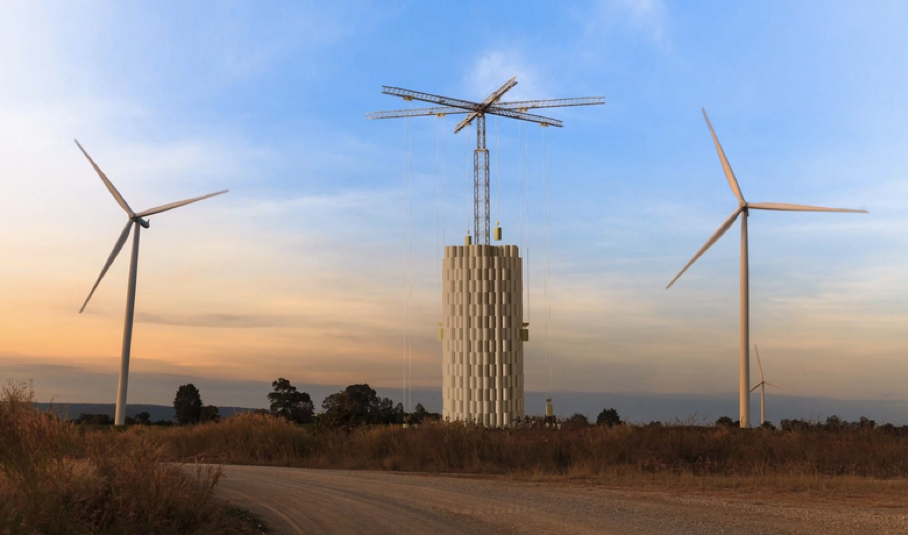This post originally appeared on the site of CGC’s campaign for a federal Green Bank.
Recent weeks have included a drumbeat of news about long-term energy storage, as start-up companies seek funding for very different approaches. A few examples via Greentech Media:
- Closed-loop pumped hydro storage. Two artificial reservoirs, one higher and one lower, that can pump water to the higher reservoir to store energy and drain into the lower reservoir to release energy.
- Electrochemical batteries. The most commonly-used lithium-ion batteries can store large amounts of power for a few hours, but new chemical formulas are stretching that time to last days or longer.
- Gravity storage. A tower of concrete blocks, with a six-armed crane at the center that raises the blocks to store energy and lowers them to release energy.

As renewable energy becomes a larger part of our energy mix, the ability to store large amounts of energy for longer periods of time will become more important. Solar and wind provide fluctuating amounts of power, the timing of which doesn’t always correspond to the time of greatest customer demand. Energy storage allows that power to be saved for when it’s needed most.
This in turn can reduce the need for fossil-fueled peaking plants to come online at times of high demand, improve the stability and reliability of the grid, save money, and reduce emissions.
But despite their importance for the future of the clean energy transition, storage technologies like the examples given here have faced a variety of obstacles. Federal research and development programs, along with venture capital, are critical players at the earliest stages. Still bigger gaps exist in bringing these technologies to commercial scale, and Green Banks have begun to focus on removing financial barriers to the widespread adoption of storage.
In the first annual report of the American Green Bank Consortium, energy storage was highlighted as a trend in 2018. The New York Green Bank and the Nevada Clean Energy Fund both took steps to promote investment in energy storage and dialogue with storage developers. The National Climate Bank Act also explicitly mentions energy storage as an qualified technology, and would be able to mobilize far greater amounts of private investment into developing new energy storage resources.
The deployment of energy storage is critically important to the future of the grid, and Green Banks have a key role to play in making it happen.